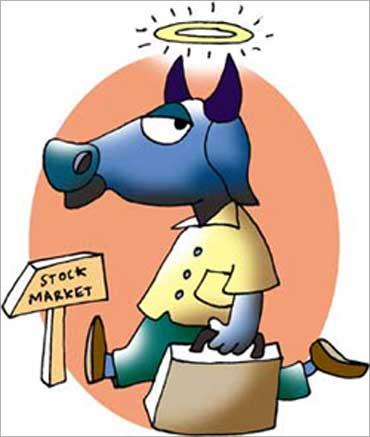
The secret to knowing when to sell a long-term holding lies in doing your homework -- even before you buy the stock in the first place.
While a company's stock price will obviously influence your decision on whether or not to sell a stock, don't let it dominate your thinking to the exclusion of all else.
If you conduct your analysis thoroughly and follow the company closely, the decision to sell becomes a lot easier.
Everyone buys a stock having certain expectations of it: earnings growth, revenue growth, expansion plans, new store formats, perhaps cost-cutting efficiencies, and so on.
If the things you expected when you bought have failed to materialise, it's a warning that you should consider selling. If they fail to materialise to the extent that you had anticipated, that's another warning.
Often, it won't be one thing that forces you to sell but a series of smaller disappointments. Any number of individual cues may finally break the camel's back.
Some possible 'sell signals':
1. A lack of direction or significant changes in senior management;
2. Earnings per share growth slowing with no new earnings streams -- such as new products or services -- in the pipeline;
3. A stock reaching a cyclical high -- for example, there being "too many cranes in the sky" for building stocks;
4. A gearing ratio creeping higher as a company tries to fund uncertain growth in earnings per share with debt;
5. A company or a significant segment of it being susceptible to a major change in government regulation, tax legislation, social demographics or the economic cycle;
6. Any other factors investors can identify, such as significantly increased competition that clouds the medium to long-term outlook.

When to sell a speculative stock
Selling a speculative or trading stock is an entirely different proposition to selling a core long-term investment.
The best way to trade specs is to set a price target, usually based on the occurrence of a specific "event" such as a takeover or major contract announcement. Once you've achieved that target -- get out. Great short-term speculative buys can soon turn into poorly performing long-term portfolio holdings for those who get too greedy.
How to get out with a smile
Most of the situations we've talked about so far can be classed in a sense as "negative selling," because you're selling either in disappointment or in anticipation of worse to come. But although selling usually involves an element of "worse to come," it can also be a positive way of locking in gains.
The PE factor
If a company's share price has had such a good run that its price-to-earnings ratio, or PE, has been driven to an unsustainable level it may be time to lighten your holding while you're ahead.
You're not selling out of the company altogether -- merely accepting that the current valuation is attractive and will deliver you a higher return than you may have otherwise expected.
So what PE level would be considered "unsustainable"? It's hard to say, but it depends on the company's earnings growth, as well as all those other factors that can affect valuations.
Remember, a company on a PE of 50 will theoretically take 50 years to "pay back" the share price out of earnings, which sounds like a long time to wait.
Also remember to use other yardsticks, such as comparing a company's PE to that of its competitors. If one stock is trading at a much higher PE than the rest of the sector without apparent justification, it's usually a good time to head for the exit with at least part of your holding.
The turnaround
Another time to "positive sell" with a smile on your face is when a company that you expected to turn around has, well, turned around.
Typically, buying a turnaround stock involves a significant element of risk. If every other investor agreed that the stock was worth buying, it would no longer be a bargain.
You'll know when a true turnaround has recovered, however, because all the indicators will be pointing in the right direction and everyone around you will be talking about the miraculous recovery -- and probably how they managed to get in on the ground floor.
Just as the crowds are clambering on board, you should be starting to think about getting out. Most of the return from such a stock has probably already arrived and, while momentum may carry the price upward in the short term, you can expect some eventual downward readjustment as the realisation strikes that the recovery is already factored into the share price.

The squirrel strategy
For much of this article, we've taken a rather extreme view of the world by assuming an investor either "buys" a stock or "sells" it. Of course you can easily sell half your shareholding or gradually add to it, sometimes through a dividend reinvestment plan.
You'll come across all kinds of recommendations, from "Hold" to "Reduce" to "Accumulate", plus some others. Hold means a stock is considered roughly fair value -- neither a buy nor a sell. Reduce means you might take the opportunity to sell down part of your holding depending on your personal circumstances. Accumulate indicates a stock is modestly undervalued.
The squirrel strategy is one way to reduce your exposure either to the share market generally or to more speculative stocks if the outlook is a little cloudy, or simply if they've had a great run.
The "squirrel" constantly takes at least half the profits out of the speculative market and reinvests into something of long-term value. If times are booming, that might be cash for safety.
Squirrels are able to put enough away for a rainy day, without forgetting to enjoy the sunshine while it lasts!